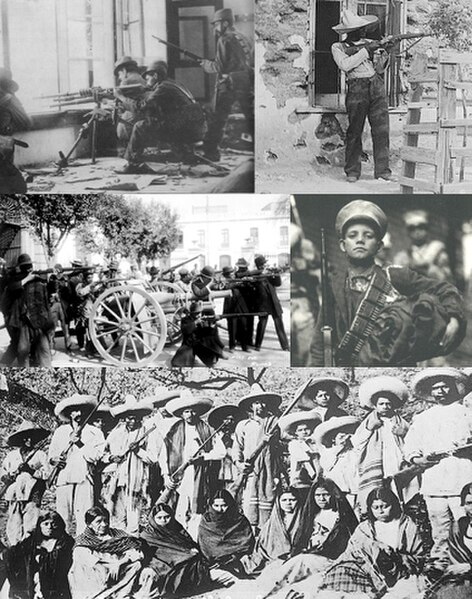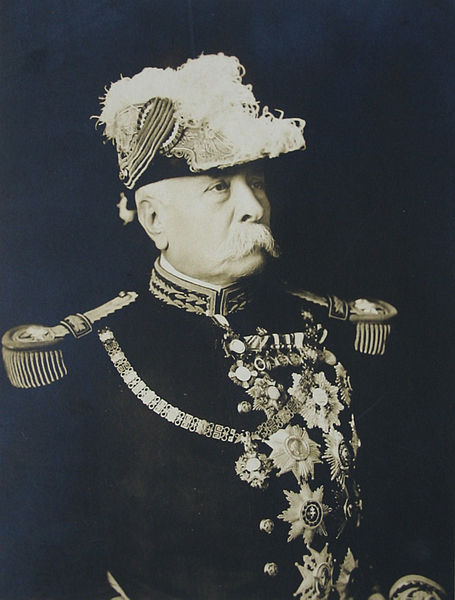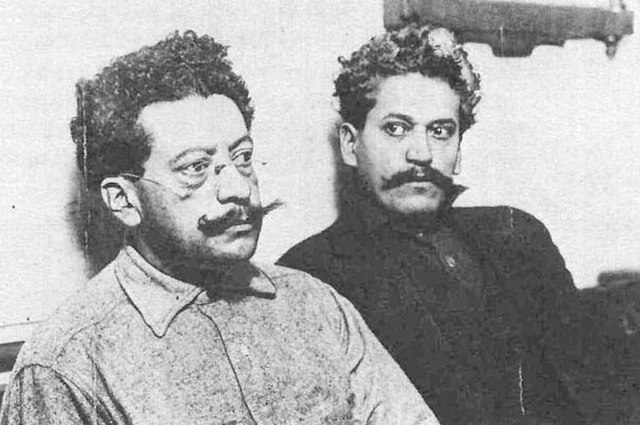The Ten Tragic Days during the Mexican Revolution is the name given to the multi-day coup d'état in Mexico City by opponents of Francisco I. Madero, the democratically elected president of Mexico, between 9-19 February 1913. It instigated a second phase of the Mexican Revolution, after dictator Porfirio Díaz had been ousted and replaced in elections by Francisco I. Madero. The coup was carried out by general Victoriano Huerta and supporters of the old regime, with support from the United States.
Rebel followers of Félix Díaz in the Mexico City YMCA during the coup against Madero
The National Palace, a target of the rebel artillery fire. There were dead bodies in the zócalo and the capital's streets.
Francisco I Madero arriving on the first day of the Decena Tragica 9 February 1913. Photographer Gerónimo Hernández.
The Belem Prison, Mexico City following the fighting in Mexico City February 1913
The Mexican Revolution was an extended sequence of armed regional conflicts in Mexico from 20 November 1910 to 1 December 1920. It has been called "the defining event of modern Mexican history" and resulted in the destruction of the Federal Army, its replacement by a revolutionary army, and the transformation of Mexican culture and government. The northern Constitutionalist faction prevailed on the battlefield and drafted the present-day Constitution of Mexico, which aimed to create a strong central government. Revolutionary generals held power from 1920 to 1940. The revolutionary conflict was primarily a civil war, but foreign powers, having important economic and strategic interests in Mexico, figured in the outcome of Mexico's power struggles; the U.S. involvement was particularly high. The conflict led to the deaths of around one million people, mostly noncombatants.

From left to right and top to bottom: Huertista troops insurging against President Francisco Madero, Ten Tragic Days, 1913 Questionable photograph, may come from a 1930s film or be a period production Defense of the government by supporters of Madero, Ten Tragic Days, 1913, Mexico City El Niño artillero (Antonio Gómez Delgado), 10 years old, enlisted on July 2, 1910 in Acatzingán, Michoacán, part of the federal troops commanded by Victoriano Huerta
General Porfirio Díaz, President of Mexico
A banner (1903) at the office of opposition magazine El hijo del Ahuizote reads: "The Constitution has died..." (La Constitución ha muerto...)
Ricardo Flores Magón (left) and Enrique Flores Magón (right), leaders of the Mexican Liberal Party in jail in the Los Angeles (CA) County Jail, 1917








